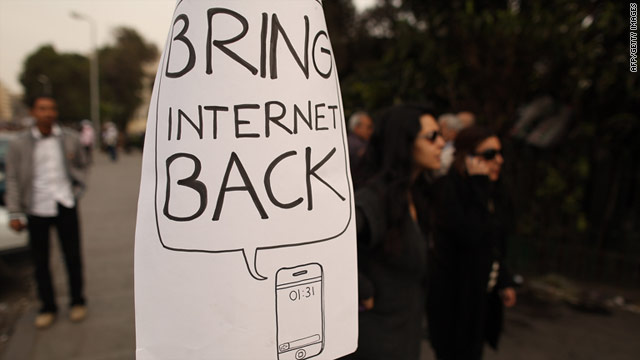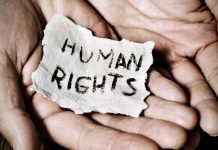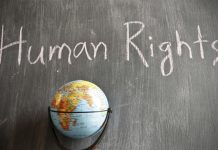This article is written by Anisha Bhandari from Institute of Law, Nirma University. The article discusses the centre’s approach of internet shutdown and how it affects the daily movement of individuals.
Table of Contents
Introduction
The willingness and urgency to display snap lines of communication is worrying, particularly in ‘Digital India.’ In view of the fact that 97% of the estimated 570 million Internet users use at least mobile devices to access the Internet, and the growing dependence on connectivity for communication and commerce, this is a highly disproportionate measure. Several studies have included the cost of these disruptions from 0.4-2 percent of the country’s daily GDP to $3 billion for India over a five-year period ending in 2017. More importantly, they have rarely been imposed in urban centers. Extreme internet shutdowns and intentional slowdowns are becoming more popular all over the world. These typically arise when somebody (probably the government) deliberately disrupts the internet or smartphone devices to monitor what citizens do or hear.
Digital India
Digital India is a movement initiated by the Government of India to ensure that government facilities are rendered accessible to people electronically via enhanced web infrastructure and expanded Internet access or digital empowerment in the field of technology. The project involves proposals to link rural areas with high-speed Internet networks. Digital India consists of three key components: the development of secure and stable digital infrastructure, digital delivery of government services, and universal digital literacy. The Indian Prime Minister, Narendra Modi, launched on 1 July 2015, is both the enabler and beneficiary of other key Indian Government schemes, such as BharatNet, Make in India, Startup India, and Standup India, Industrial Corridors, Bharatmala, Sagarmala. As of 31 December 2018, India had a population of 130 crores (1.3 billion), 123 crores (1.23 billion) Aadhaar digital biometric identity cards, 121 crores (1.21 billion) mobile phones, 44.6 crores (446 million) smartphones, 56 crores (560 million) internet users, up from 481 million people (35 percent of the country’s total population) in December 2017, and 51% growth in e-commerce. Pradhan Mantri Gramin Digital Saksharta Abhiyan (abbreviated as PMGDisha)is an initiative under the Digital India program approved by the Union Cabinet chaired by Prime Minister Narendra Modi. The key objective of Pradhan Mantri Gramin Digital Saksharta Abhiyan is to digitally literate 6 crore people in rural areas throughout India, touching about 40% of rural households by covering one member of each qualifying household.
Internet shutdown
Internet shutdown as Government-imposed blocking of links to the Internet as a whole within a single locality or localities for some period of time. The instances of Internet shutdowns in India, i.e. the state, which have imposed general bans on access to Internet services, whether mobile or fixed, are increasing at a worrying pace. The Internet is a central enabler of a range of fundamental rights, including freedom of speech and expression. In addition to being a tool for connectivity, it has also been influential in transforming the economy, improving healthcare, emergency care, and dispersing e-government initiatives. Family existence is now based on the availability of digital media in Indian society, as are all facets of human ties in business processes, both inside and between companies.
As part of this initiative, the instances of Internet shutdowns are being monitored throughout India in an effort to draw attention to the disturbing pattern of disconnecting links to Internet infrastructure, for purposes varying from restricting agitation to preventing cheating in an examination. With this tracker, the goal is to stand strong with the message that the Internet-based knowledge superhighway is important for the country’s comprehensive socio-economic and cultural growth.
The cost of shutdown
Deliberated internet shutdowns last year cost the global economy more than $8 billion, according to a recent estimate. A research published on Tuesday by the internet research firm Top 10 VPN analyzed the economic impact of internet shutdowns worldwide throughout 2019. Top 10 VPN tracked 18,225 hours of internet shutdowns around the world in 2019, with a total economic cost of $8.05 billion. According to a recent report, India lost more than $1.3 billion in internet shutdowns around the world — which lasted 4.196 hours in 2019—making it the third most economically impacted nation after Iraq and Sudan, among 21 countries where significant internet shutdowns happened last year. This is the product of internet shutdowns in regions such as Jammu & Kashmir, Arunachal Pradesh, Assam, Meghalaya, Rajasthan, Tripura, and Uttar Pradesh. Since 2012, the Indian Government has shut down the Internet 374 times in different sections of the world. More than a hundred of these shutdowns took place alone in 2019. The most recent blackout took place in Uttar Pradesh on Thursday, where the internet was shut down in at least eight areas. Since August 5, there has been no mobile Internet service in Kashmir.
Internet shutdown as a violation of rights
The United Nations Human Rights Council adopted a resolution on civil rights exposure to the Internet. On 1 June, the UNHRC condemned “actions to deliberately prohibit or hinder exposure to or distribution of knowledge on the Internet,” arguing that they breached international human rights law. The Resolution also claimed that the interests of citizens offline must also be secured online. India, China, Russia, Saudi Arabia, and South Africa opposed the resolution. India, like other nations opposed to this resolution, wanted the UN to remove a paragraph in the resolution criticizing steps to restrict or impede access to online knowledge.
Internet connectivity is a human right that must not be limited. A full shutdown may be harmful as it does not differentiate between the legitimate and unlawful elements of the operation. You can’t render card purchases or focus on e-governance during shutdown. Poor and disadvantaged citizens can not rely on biometry for rations and cooking fuels. In the midst of this, internet blackout often limits legitimate modes of expression. Blanket shutdowns are disproportional and unconstitutional. In India, there has been no agreement as to how these limits on the Internet represent a breach of fundamental human rights.
Moreover, on the basis of some of the work carried out by us at the YP Base, such shutdowns are unsuccessful in mitigating crime. Work by Stanford University scholars in 2019 notes that internet connectivity is a required leverage wall for citizens to express grievances in a democratic manner as well as to create appeals for peace. But if access is blocked, it can contribute to abuse of the rights of citizens. Such shutdowns often end in economic damages. Even small to medium-sized enterprises are unable to carry out their financial transactions. It is clear that internet shutdowns violate the constitutionally guaranteed individual rights. They are not successful and lead to significant social and economic casualties.
Internet shutdown across world
Governments are gradually resorting to shutdowns in periods of crisis, claiming that they are appropriate for national defence or to curtail the dissemination of misinformation. But these drastic steps are more a group retribution than a pragmatic solution. When the internet is down, people’s freedom to express themselves publicly is restricted, the economy declines, the media fails to post photographs and videos of government overreach and violence, children are cut off from their classes, taxes can not be charged on schedule, and those in need of health care can not have reliable coverage. While governments mandate blackouts, Internet service providers are the ones to enforce them. Companies frequently justify compliance with these requests as a matter of local law, suggesting that they risk losing their licenses if they do not do so. Providers can, however, abide by the UN Guiding Principles on Business and Human Rights, the most generally agreed set of human rights principles, and rethink their blind collaboration. Above all, the UN Human Rights Council has explicitly rejected the deliberate denial or obstruction of access to public content as a breach of international human rights law.
Authorities also seek to defend shutdowns on shaky legal arguments, and it is no wonder that the cases filed by activist lawyers in Sudan, Pakistan and Zimbabwe have effectively opposed blackouts. When faced with state requests that connectivity is broadly limited, Internet service providers may suggest bringing specific suits themselves. At the very least, they can provide as much detail as they can on the controls they enforce in the interests of accountability or view demands for the least restrictive constraints.
India – the growing democracy in the country – is the world leader in shutdowns. Once access to the internet in Kashmir was blocked for months at the end of 2019, Indian authorities defended the decision by claiming that it was appropriate to temporarily limit access to the internet during times of crisis in order to prevent “permanent loss of life.” Four UN Special Rapporteurs criticized the move, arguing that the closure in Kashmir was “inconsistent with the standards of security and proportionality. At least one report, by a Stanford Global Cyber Policy Incubator researcher, showed that shutdowns are potentially ineffective to prevent violent incidents; it monitored a quadrupling of aggression while networks were interrupted relative to situations when the internet persisted.
Shutdowns grab the press, but more complex, similarly disruptive strategies to exploit the Web merit coverage as well. Some officials, such as Chad, Kazakhstan, Sri Lanka, and Venezuela, chose to block particular social networking or messaging apps or to restrict traffic to live streaming sites. Indonesia and Iran throttled the speed of the internet, rendering abuse impossible to spot. In Russia, the current “Sovereign Internet” rule, which allows the Web to function without transmitting data to servers overseas, has laid the groundwork for the authorities there to allow blocking anything from a single letter or email to closing down internet access in Russia. Iran’s National Information Network, an entirely different internal network, could have enabled NetBlocks to enforce the most significant disconnection of any world in terms of its technological sophistication and scope earlier in December.
However as the internet is open, there is a vast variety of legislation and regulations that require regulators to compel businesses to restrict the material on the network accessible to people in their jurisdictions. In China, messaging developers and mobile applications are expected to provide government filters in all their goods. The German NetzDG legislation threatens Internet providers with heavy penalties if they do not carry down “criminal” content as described in 22 provisions, ranging from defamation of faiths and insults to public service to threats of abuse. The German approach is currently being exported. Thirteen nations, including the Philippines, Russia, Singapore, and Venezuela all use this as a reason for their own regressive policies. Vietnam adopted specific regulations and says that Facebook is already compliant with several of the demands to limit or delete content, but that has been difficult to prove.
It makes sense, of course, for internet corporations to practice control over information posted on their sites. There is nearly complete agreement in favour of the removal from the Web of depictions of child pornography. Faced with international criticism and scepticism, Facebook has taken measures to respond to efforts to use its site to influence elections in the United States and to fan the fires of hate and abuse in Myanmar. Following live-streamed school shootings on Facebook Live or Twitch, Internet platforms and policymakers have introduced initiatives such as the Christchurch Call, promoting the “elimination” of material considered objectionable in real-time before being posted.
But posting filters like these may quickly be leveraged without request for previous restriction. Since the meanings of “terrorism” or “extremism” are too ambiguous, there is a danger that many legal actions of speech may be suppressed before anybody sees them, particularly in places like Egypt or Thailand, where authoritarian regimes quell opposition by identifying and punishing their critics as “terrorists” or “false news” providers. Although governments have succeeded in eliminating content from the Internet, people often fail to have their demands addressed. Women and girls trying to delete non-consensually posted personal photographs or finding redress from online abuse are especially susceptible. Ironically, while companies and governments are leading the charge in the fight against “extremism,” the majority of female victims of harassment are asked to bear much of the burden of responding themselves.
Organizations such as Access Now, which is heading the #KeepItOn movement, have committed themselves to opposing general shutdowns and influencing debates about more effective regulations. Nuanced solutions to intermediary responsibility may discourage Internet firms from censoring too frequently in an attempt to escape litigation. Organizations will offer priority to designing strategies that encourage the protection of individuals online while preserving and supporting the open internet. Otherwise, they risk being instruments of regimes trying to curb dissension and nonviolent opposition. In the meanwhile, the increasing software industry is helping to bypass the constraints on the internet blackout, enabling sophisticated consumers to get past the roadblocks of their governments. Resources such as mesh networks, virtual private networks, and proxies are becoming an integral component of activist toolboxes.
Conclusion
Missing internet connection is worse than simply losing the opportunity to watch your favourite movie or play a video game. It now means livelihoods for small businesses and people, online banking, women’s health, access to taxi services, healthcare, schooling, and almost every other part of modern life. Governments have the idea that the way to slow down the development of the internet is to close down the internet. The Government of India can not, on the one hand, push Digital India and use the kill switch to turn it off with the other. How we cope with this problem would have a lot to tell on whether or not digital India is a democratic India.
References
- https://theprint.in/opinion/numbers-show-digital-india-cant-afford-internet-shutdowns-with-bad-economy/336410/
- https://www.medianama.com/2020/01/223-india-internet-shutdowns-2020/
- https://thewire.in/rights/digital-india-is-offline
- https://www.thehindu.com/opinion/op-ed/digital-india-needs-to-go-local/article7723292.ece
- https://www.mygov.in/group/digital-india/
- https://www.digitalindia.gov.in/
- https://telecom.economictimes.indiatimes.com/news/internet-users-in-india-to-reach-627-million-in-2019-report/68297051
- https://www.thehindu.com/opinion/op-ed/digital-india-needs-to-go-local/article7723292.ece
- https://indianexpress.com/article/india/aadhaar-driving-licence-linking-ravi-shankar-prasad-5525713/
- https://foreignpolicy.com/2019/08/05/india-is-the-worlds-leader-in-internet-shutdowns/
- https://www.nytimes.com/2019/12/17/world/asia/india-internet-modi-protests.html
- https://twitter.com/Benarasiyaa/status/1210209349722759169
- https://www.top10vpn.com/cost-of-internet-shutdowns/
- https://ohchr.org/EN/NewsEvents/Pages/DisplayNews.aspx?NewsID=24909&LangID=E
- https://www.expressvpn.com/blog/guide-survive-internet-shutdown/
- https://qz.com/1701045/hong-kong-protestors-use-bridgefy-to-preempt-internet-shutdown/
- https://www.wired.co.uk/article/chemical-weapons-in-syria-youtube-algorithm-delete-video
- https://www.accessnow.org/keepiton/
- https://www.accessnow.org/
- https://theconversation.com/fighting-online-abuse-shouldnt-be-up-to-the-victims-87426
- https://www.eff.org/deeplinks/2019/05/christchurch-call-good-not-so-good-and-ugly
- https://medium.com/prostasia-foundation/child-protection-and-the-limits-of-censorship-a70f37389cb8
- http://justitia-int.org/wp-content/uploads/2019/11/Analyse_The-Digital-Berlin-Wall-How-Germany-Accidentally-Created-a-Prototype-for-Global-Online-Censorship.pdf
- https://www.hrw.org/news/2018/02/14/germany-flawed-social-media-law
- https://www.hrw.org/news/2019/04/24/joint-statement-russias-sovereign-internet-bill
- https://www.huffingtonpost.in/entry/kashmir-blackout-could-backfire-narendra-modi-govt-expert-explains_in_5d8a1f7fe4b0c2a85cb18de1
- https://netblocks.org/reports/internet-and-streaming-services-blocked-in-kazakhstan-on-election-day-dAmOP7y9
- https://www.cnbc.com/2019/04/22/sri-lankan-officials-shut-down-facebook-whatsapp-after-bombing.html
- https://www.thejakartapost.com/academia/2019/05/24/slow-days-for-netizens.html
- https://arxiv.org/abs/1306.4361
- https://www.ohchr.org/EN/Issues/FreedomOpinion/Pages/SR2017ReporttoHRC.aspx
- https://www.accessnow.org/judges-raise-the-gavel-to-keepiton-around-the-world/
- https://icrier.org/pdf/Anatomy_of_an_Internet_Blackout.pdf
LawSikho has created a telegram group for exchanging legal knowledge, referrals and various opportunities. You can click on this link and join:
 Serato DJ Crack 2025Serato DJ PRO Crack
Serato DJ Crack 2025Serato DJ PRO Crack











 Allow notifications
Allow notifications



